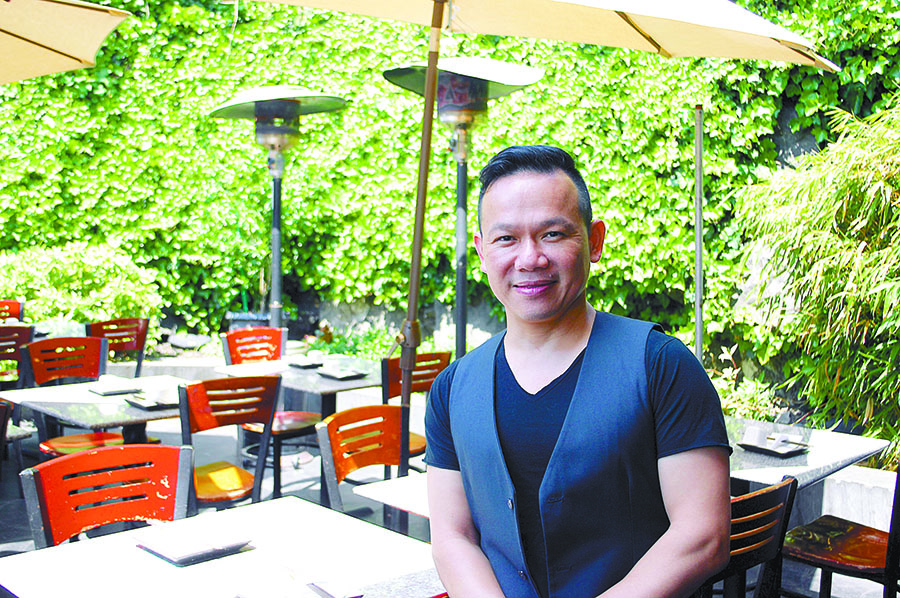On a warm late-September afternoon, a war-room atmosphere envelops the downtown headquarters of the Washington State Democratic Party. The first Tuesday in November is drawing near, and a sense of urgency pervades. Democrats have had a lock on the governorship since 1984, and enjoyed a dozen consecutive years of state House dominance under the firm hand of Speaker Frank Chopp. Now the mission centers on fracturing the Majority Coalition and reclaiming control of the 49-member state Senate.
Inside a hive of fifth-floor offices above Second and Cherry, the cream-white walls are ablaze with color-coded legislative district maps and pictures of past and present party victors, from Jack and Bobby Kennedy and Bill Clinton to Henry “Scoop” Jackson and Jay Inslee. At the helm is state party leader Jaxon Ravens, a barrel-chested 46-year-old with a thatch of ungovernable sandy hair and a short-cropped beard flecked with gray.
“I’ll tell you what’s at stake: truly funding education, getting a transportation package, and making sure a woman’s reproductive rights are not jeopardized.”
Ravens took charge in February, elected by a majority of the 176 members of the state central committee, after Democrats bid farewell to the retiring Dwight Pelz, the oft-times tornadic life of the party for the past eight years. It is up to Ravens to win back the Senate that slipped from the Democrats’ grasp in December 2012 when former Republican-turned-Democrat Rodney Tom and maverick conservative Democrat Tim Sheldon deserted ranks to form the largely Republican Senate coalition.
The son of a famous photographer, Bob Fitch, who shot many iconic images of Martin Luther King Jr. and Cesar Chavez in the 1960s, Ravens is the consummate party operative. He has worked for the state party for more than a decade and has received high marks from top Democrats for helping to recruit quality candidates. Ravens spent most of the 1990s traveling around the world, and when he returned, he set off on a solo bicycle ride across the U.S., following the Lewis and Clark Trail. “He has enormous energy,” notes Sen. Sharon Nelson, the Democratic minority leader from Maury Island who will lead the Senate as its majority leader if Democrats prevail.
When the year began, observes Ravens, the party was down in the dumps, dispirited and frustrated by partisan deadlock, which it blamed largely on turncoats Tom, who has since announced that he will not seek re-election, and Sheldon, a state lawmaker for 23 years who barely survived the August primary. Both renegades were at the center of forging a new coalition structure built on the politics of no tax increases and the insistence that reforms and efficiencies be imposed before any additional state spending could take place.
“The level of optimism was very bad,” recounts Ravens. “We felt that they allowed the Republicans to stop Democrats from getting a transportation bill and from doing what we need to do on education funding. But when Tom stepped down, the optimism started to pick up.”
Still, the political winds are not at the Democrats’ back. For the first time since 2002, not a single statewide candidate will be on the ballot. That, explains Ravens, can have a negative effect on fundraising, gathering volunteers, and ginning up the voter enthusiasm that translates into higher turnout, which Democrats badly need in some key districts— particularly the 45th, a bellwether in Seattle’s easterly suburbs, and the 48th, up in Whatcom County—if they are to recapture the Senate. (Voter turnout in the Aug. 5 primary was a paltry 29.3 percent in King County, and just a fraction over 31 percent statewide.)
“Democrats need a big turnout of young voters, nonwhite voters, Obama voters, and they are not going to get that. The enthusiasm isn’t there.”
“It’s not impossible,” says Christian Sinderman, a prominent Democratic strategist, “but there’s no clear path.”
Each party has its narrative, well-scripted rationales as to why they should lead and what is at stake if they are unsuccessful. This from Sen. Sheldon, who told Seattle Weekly that he again plans to caucus with Republicans: “If the Democrats win the Senate, we are going to see incredible tax increases, incredible state spending—and it would be a very Seattle-centric branch.”
Conversely, Sen. Nelson offers this assessment: “I’ll tell you what’s at stake: truly funding education in order to follow the mandate of the state Supreme Court, getting a transportation package, and making sure a woman’s reproductive rights are not jeopardized.”
To retake the upper chamber, now split 26-23, Democrats need to pick up two seats without losing any, to seize a 25-24 seat advantage. (They have little worry of relinquishing their grip on the state House, where they hold a 55-43 seat majority.)
“I feel like we have a very strong chance,” boasts Sen. Nelson. Counters Ritville wheat farmer Mark Schoesler, the current GOP Caucus chair who would lead the Senate if the Republican-dominated Coalition retains power: “I like our position a lot better than Sharon Nelson’s.”
Rodney Tom’s surprise announcement on April 14 that he was dropping his re-election bid, citing his own kidney stones and the needs of his elderly father, who’d broken his leg the week before, have altered the electoral math. His 48th District seat on the Eastside will almost certainly go to Cyrus Habib, the young freshman House Democrat whom the party considers an up-and-comer. He’s facing GOP rookie Michelle Darnell.
But that gain for the Democrats could be offset with a 30th District victory by Mark Miloscia of Federal Way. He represented the south Sound for years as a conservative Democrat, but switched parties earlier this year to run for the seat held by retiring Democratic incumbent Tracey Eide. Miloscia won nearly 57 percent of the vote in the August primary over Democrat Shari Song.
“My guess is that everything stays pretty much the same,” speculates Brent Ludeman, executive director of the Senate Republican Campaign Committee. “We’ll have 25 Republicans plus Sheldon, and they’ll have 24.”
“Politics,” muses former state GOP chair Chris Vance, “is part art and part science. And when you look at the science part, our open primary system is a pretty good barometer. Anyone who has received less than 45 percent of the vote in the primary is not going to win. It has been that way as long I can remember.”
A onetime state representative and later King County councilman, Vance is all but certain Republicans will hold the Senate. “Democrats,” he says, “need a big turnout of young voters, nonwhite voters, Obama voters, and they are not going to get that. The enthusiasm isn’t there. The electorate who will participate [in the general election] will be older, whiter. And so we will continue to have divided government in Olympia, where neither party has shown any inclination to work together.”
A handful of other Senate races will help determine the balance of power. Democrats are banking on Matt Isenhower to beat Sen. Andy Hill in the 45th, a suburban swing district that encompasses parts of Kirkland, Redmond, and Woodinville. A former surface warfare officer who prepared the Navy’s first team to rescue hostages and capture Somali pirates off the Horn of Africa in 2003, Isenhower is a business-friendly Democrat, a 33-year-old senior product manager at Amazon. He captured more than 46 percent of the vote in the primary, meeting Vance’s threshold of possibility.
Hill is a policy-driven moderate Republican and served as the Majority Coalition’s lead budget writer. This has been this year’s most expensive Senate race. As of October 1, Hill had raised more than $540,000—including an $80,000 independent expenditure from the National Association of Realtors—to Isenhower’s $270,000.
Another key showdown is shaping up in Pierce County, pitting incumbent GOP Sen. Steve O’Ban against longtime Democratic State Rep. Tami Green. Both are proven vote-getters. Outspent two to one in the primary, Green collected only 43 percent of the vote, but still, the 28th District is 60 percent Democratic.
Whatcom County’s 42nd District may also be fertile ground for Democrats. Entrenched Republican incumbent Sen. Doug Ericksen is facing a stiff challenge from Democrat Seth Fleetwood, an attorney and former Bellingham City Council member. A clash of views over climate change has dominated the race and captured the interest of California billionaire Tom Steyer, who in September donated $1 million to the Washington branch of his NextGen Climate Action Committee.
Of that, about $50,000 went into the Kennedy Fund, a political committee that is backing Democrats for the state Senate—nearly the same amount of money Costco Wholesale, opposed to Democratic efforts this past session to block elimination of a 17 percent license fee on retailers selling liquor to restaurants, has given to state Republicans.
As chairman of the Senate energy committee, Ericksen has been a vocal critic of Gov. Jay Inslee’s plans to deal with global warming by curtailing carbon emissions, perhaps through a cap-and-trade system.
When all the dust settles a few weeks from now, Chris Vance figures it will be a political wash. “Fact is, they need to win two races, and they will have to come from behind to do that,” he says. “And I don’t think anything is going to happen that will alter the present political landscape.”
Jaxon Ravens isn’t so sure. “We’ve got a ground game going, and we have a little more money than we had in the primary. Look, we know what we’re doing. We know how to win.”
econklin@seattleweekly.com








